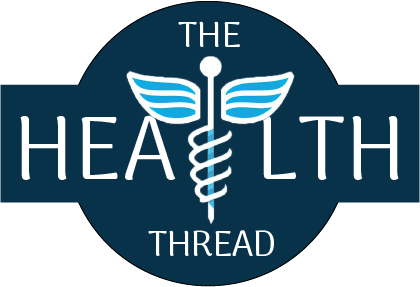
Written By THT Editorial Team

Reviewed by Liza Nagarkoti , BSc Nursing, MA(Nutrition), Project Officer (Health) LWF Nepal
Learn about Local Snakes: Familiarize yourself with the types of venomous snakes that are native to your area. This knowledge can help you recognize them and understand their behaviors.
Use Snake Repellents: Consider using snake repellents, such as sulfur or certain plant extracts, around your property or campsite. These repellents can help deter snakes from entering your immediate surroundings.
Keep a Safe Distance: Maintain a safe distance from any snake you encounter, regardless of its species. Even non-venomous snakes can bite if they feel threatened or cornered.
Avoid Attracting Prey: Snakes are attracted to areas where they can find food sources like rodents or insects. Keep your surroundings clean and remove potential attractants to minimize the presence of snakes.
Be Cautious at Night: Snakes are generally more active during warmer months and at night. Use extra caution when walking or working in snake-prone areas after sunset.
Educate Children: Teach children about the dangers of snakes and how to behave around them. Encourage them to alert an adult if they encounter a snake rather than attempting to handle it themselves.
Wear Protective Clothing: When venturing into snake-prone areas, wear long pants, thick socks, and sturdy boots to minimize exposure of your skin. Consider tucking your pants into your socks for added protection.
Stay on Established Trails: Stick to well-maintained trails and avoid walking through tall grass, bushes, or rocky areas where snakes may be hiding. Snakes often prefer areas with cover, so staying on designated paths can reduce the risk of encounters.
Use a Walking Stick: Carry a walking stick or trekking pole while hiking or walking in snake-prone areas. Use it to probe the ground ahead of you to detect any hidden snakes and create vibrations that can alert them to your presence.
Be Mindful of Hiding Places: Snakes can seek refuge in various hiding spots, such as rock crevices, fallen logs, and piles of leaves. Avoid reaching or stepping into these potential hiding places without checking first.
Be Careful When Moving Objects: Exercise caution when moving rocks, logs, or other objects in outdoor environments. Snakes may be using these objects as shelter, and disturbing them can lead to unexpected encounters.
Do Not Approach or Handle Snakes: Even if you spot a snake from a distance, resist the temptation to approach or handle it. Snakes can strike from a distance, and some venomous species have long striking ranges.
Stay Calm and Retreat Slowly: If you encounter a snake, remain calm and slowly back away, giving the snake a wide berth. Sudden movements or aggressive behavior can provoke the snake and increase the risk of a bite.
After the bite:
Create a Splint: If the snakebite occurred on an arm or leg, you can create a splint using a sturdy object like a stick or board. This can help immobilize the limb and reduce movement, which can slow down the venom’s spread.
Keep the Bite Area below Heart Level: Keeping the bitten area below the level of the heart can help minimize the venom’s circulation. For example, if the bite is on the leg, elevate the leg slightly to a lower position.
Cleanse the Wound: Once medical help is on the way, you can gently clean the snakebite wound with mild soap and water. Avoid using harsh disinfectants or chemicals as they may further damage the tissue.
Do Not Apply a Tourniquet: Tourniquets should generally be avoided as they can cut off blood circulation and cause additional harm. They are not effective in preventing venom from spreading.
Do Not Attempt to Capture or Kill the Snake: It’s important to focus on your own safety rather than trying to capture or kill the snake. Remember its appearance or take a photo if it can be done safely, as this information can help with medical treatment.
Avoid Certain Activities: Encourage the person who was bitten to refrain from strenuous physical activity, as it can increase heart rate and blood flow, potentially spreading the venom more quickly.
Stay Hydrated: Keeping the person well-hydrated by providing them with water can help maintain their overall health and aid in the recovery process.
Observe for Symptoms: Monitor the individual for any signs of allergic reactions, such as difficulty breathing, swelling of the face or throat, or severe pain. Inform medical professionals of any changes or worsening symptoms.
Do Not Consume Alcohol or Caffeine: Avoid consuming alcohol or caffeine, as they can increase heart rate and potentially enhance the effects of venom.
Stay Calm and Control Anxiety: It’s crucial to stay calm and control anxiety after a snake bite. Panicking can elevate heart rate and promote the spread of venom.
Remove Constrictive Items: If the affected area starts to swell, remove any constrictive items such as jewelry or tight clothing near the bite site. This can help prevent constriction and reduce discomfort.
Avoid Cutting or Sucking the Wound: Contrary to popular belief, cutting the wound or attempting to suck out the venom is not recommended. These methods are ineffective and can lead to further complications.
Note the Snake’s Characteristics: If possible, try to remember or take a photo of the snake to provide important information to healthcare professionals. Details such as color, pattern, size, and shape can aid in identifying the snake and determining the appropriate treatment.
Do Not Use Home Remedies: Refrain from using home remedies, traditional remedies, or applying substances to the wound. These can potentially interfere with medical treatment and cause adverse reactions.
Stay Updated on Tetanus Vaccination: Ensure that you and the person who was bitten are up to date on tetanus vaccination. If necessary, seek medical advice regarding tetanus booster shots.
Keep Emergency Services Informed: If you need to call emergency services or seek medical assistance, provide accurate information about the snake bite, location, and any relevant details. This can help responders provide prompt and appropriate care.
